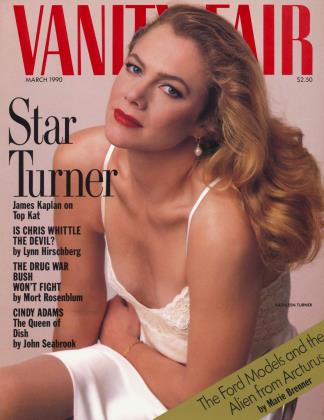Sign In to Your Account
Subscribers have complete access to the archive.
Sign In Not a Subscriber?Join NowCunning Merce
The posters for Merce Cunningham's seasons never said, 4'Mr. Cunningham will perform nightly," but it was an unwritten rule we relied upon. Now it can be truly unwritten: Cunningham has begun to absent himself from some programs. And, as he's performing less, he's making more. His latest is August Pace, whose main substance is seven male-female duets. (New York will see it for the first time this month.) With music by Michael Pugliese, it recalls his 1980 masterpiece, Duets, a championship display of partnering made along ice-dance rules— no high lifts and not more than a yard's gap between male and female. Each Duets duet was different, each strict as a sonnet. The duets of August Pace are all unalike also, but here Cunningham is following other rules. Man and woman may move far apart and develop different material. This is dialogue as in Chekhov or Joyce or Beckett— man and woman often on different wavelengths, at crosspurposes, in two overlapping monologues. Nobody but Cunningham could bring such dialogue off in dance terms; nobody but him could bring it off seven times in a single work.
Why always male-female duets? Because Cunningham relishes the sheer differentness of male and female, and the chivalry of civilized behavior between the two. Differentness and chivalry have always been crucial to Cunningham. August Pace shows that, and it also shows that he pursues the same concern as the other great choreographers: human diversity.
ALASTAIR MACAULAY
 View Full Issue
View Full Issue






Subscribers have complete access to the archive.
Sign In Not a Subscriber?Join Now